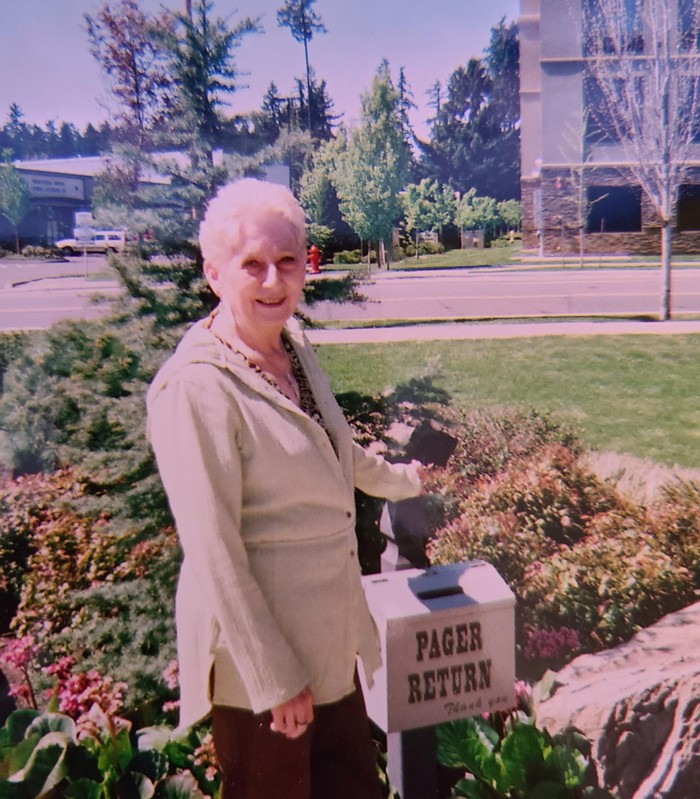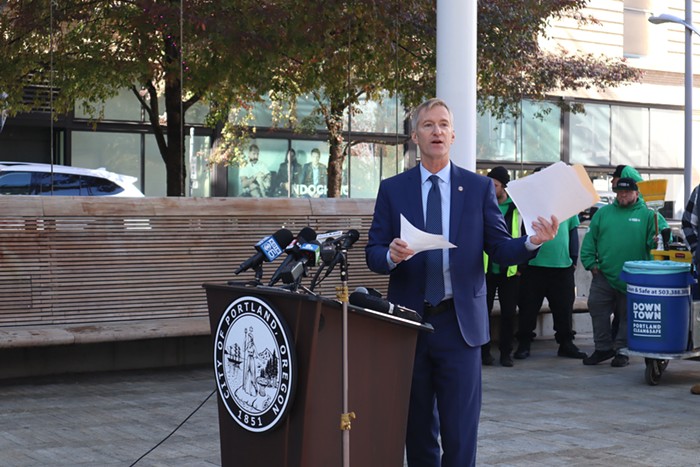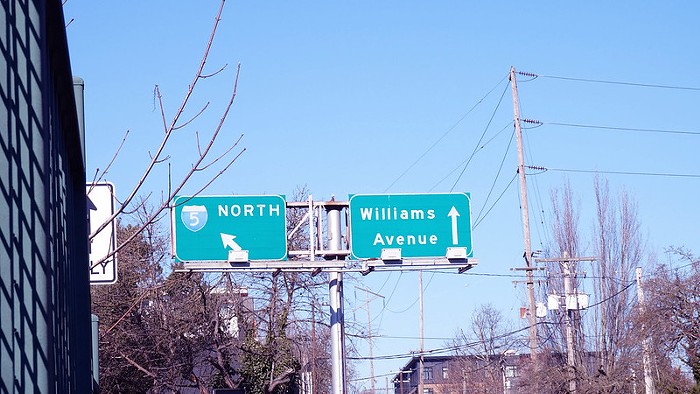MARY SCHLICK PEVETO directed the legislators' attention to a color-coded map of the air quality at Portland's schools. Schools in Northwest and Northeast Portland stuck out as black marks—those neighborhoods' schools sit amid some of the most toxic air of any schools in the country.
"This is a picture of a city that has sacrificial zones of toxic air quality," Peveto told the six state representatives and senators who gathered on Friday, August 7, for the first meeting of the newly formed Portland Air Quality Workgroup. "Oregon's environmental quality is not strict enough to provide protection for our children."
Though it strives to be the greenest city in America, an exhaustive USA Today study found that six of Portland's schools were in the worst percentile nationwide for air toxins. That puts Portland's school air quality on par with that of Cleveland, Ohio. Citywide, the amount of benzene (a cancer-causing chemical found in gasoline) is 26 times the safe standard set by the state's environmental quality experts.
All this is frustrating to Peveto, whose daughter attends Chapman Elementary School in Northwest, where the air safety rating is near the bottom of the scale. Back in April, Peveto started organizing toxic air meetings in her neighborhood and the group was quickly christened Neighbors for Clean Air (pdxair.blogspot.com).
Fed up with what the group views as weak enforcement of air quality, Neighbors for Clean Air decided to do its own research. Crunching pollution numbers available on the Environmental Protection Agency (EPA) website, group member Bob Holmstrom found that the ESCO steel plant five blocks from Chapman Elementary had doubled its emissions of metals into the air from 2002 to 2007. Though the emission increase did not violate any laws, the news inflamed the neighbors.
"We're not a radical environmental group. We're parents and we're concerned about this other picture of Oregon," says Peveto. "We're not really given a clear picture of what any given industry is putting into the air we breathe."
ESCO representative Carter Webb told the Air Quality Workgroup on Friday that ESCO has made "major improvements" over time on some of its emissions, and that "if ESCO disappeared tomorrow, it would have little effect on air quality" citywide.
Meanwhile, Neighbors for Clean Air say they have gathered 1,200 signatures demanding the factory install the best air filtration technology available.
Their petitioning was helped in part by a "significant odor event" that haunted the neighborhood around Chapman Elementary during early June. Numerous households called the Department of Environmental Quality (DEQ) to complain that their homes and streets reeked of gas. Peveto and Neighbors for Clean Air members suspected that one of the hundreds of gas tanks stored in the industrial area north of their neighborhood had sprung a leak. The DEQ never found the cause of the smell that lingered for days.
Of concern to Neighbors for Clean Air is the fact that the DEQ currently has only one toxic air quality monitor set up in all of Portland—costing $125,000 a year to maintain and analyze. The DEQ says cost is a major factor preventing the establishment of more. Meanwhile, the DEQ is partnering with the EPA to test air quality at one Portland school, Harriet Tubman Leadership Academy, this fall, but the testing will only happen for 60 days. "You need a year to really get comprehensive data," admits DEQ Air Quality Administrator Andy Ginsburg.
"This is so shocking, this is my district," said North/Northeast Portland Representative Tina Kotek, who sits on the Air Quality Workgroup, at last week's meeting.
"I would like to see more monitoring at school sites," agreed State Senator Suzanne Bonamici after hearing the neighbors' and DEQ's testimony.
But even if Neighbors for Clean Air succeeds in rallying Portland to clamp down on industrial pollution, a bigger source of benzene will still be riding high: The car-clogged freeways that cut through town cause 42 to 56 percent of the benzene in Portland's air. In Northwest, cars create 50 percent of the air's cancer-causing benzene and factories like ESCO only 16 percent, according the DEQ.
Northeast Coalition of Neighborhoods' Sylvia Evans pitched an interesting idea to legislators last week to cut cars' health impacts: Mandate that a small percentage of new highway construction budgets go into a health care fund. Evans lives in a North Portland affordable housing complex next to I-5 and, like Peveto, urged legislators to make Oregon live up to its green reputation.
"As trucks and vehicles move through our neighborhood, they should be responsible for the toxins they leave behind," Evans said.



















